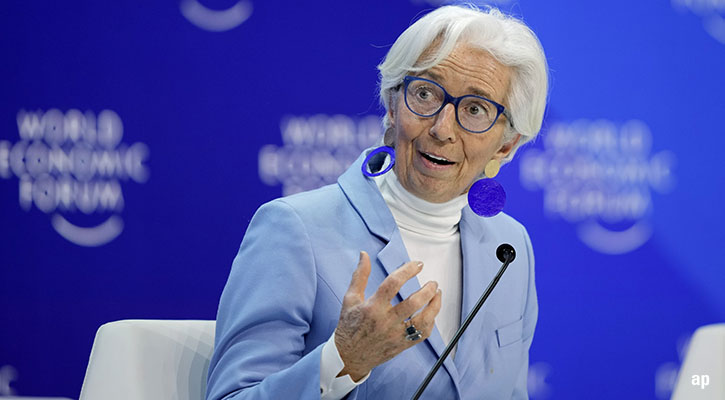Scott Burns: The ever-changing role of fixed income in your portfolio. Hi there. I'm Scott Burns, Morningstar's Director of Fund Research. Joining me today to discuss bonds in the portfolio is Michael Jones, chief investment officer and chairman of the RiverFront Investment Group.
Michael, you've been participating in the ETF Invest Conference and part of the discussion that you had on your panel was about fixed income--not just, are they overvalued or undervalued or what's the inflation outlook, but really more holistically, what is the role of fixed income in the portfolio? Is it changing?
Michael Jones: I think the role of fixed income has to change and the reason it has to change is, we look back over the last 30 years and fixed income has been the magic asset class. It has consistently provided extremely attractive returns over and above inflation, and yet it's also had very low volatility. So what’s not to love? Now it comes with a price. The last 30 years you haven't had to make a choice in fixed income. It's given you great returns over and above inflation and low volatility.
Now every dollar that goes into fixed income comes at a price of really reducing the expected return of the portfolio. I need to be careful when I say that. That's based on RiverFront's methodology that says that the price you pay matters. So, when bonds are starting with a yield of 1.5%, we're not going to put some kind of long-term average return assumption of 6% for bonds. If you start at 1.5%, history says you're going to get at best 1.5% returns. So now…
Burns: But history would have said that two years ago, right?
Jones: Well, history would have said two years ago that you're going to get 3% because they were at 3% then, and this is really important. People say I've got lot more than 3% over the last two years--that's true because when rates fell, you got a price appreciation in your bonds. But over a 10-year period of time, the number-one source of returns is interest on your interest. So how do bonds work: If you start with rates higher and then they fall, you get a capital gain and you feel like a genius, but if you reinvest at lower yields over a 10-year period, you're going to get back to that starting yield.
Burns: Right, it ultimately catches up.
Jones: It ultimately catches up to you. So basically, the starting yield is going to give you your best indicator of what your return is. Bonds now, every element of risk reduction that you get from investing in bonds comes at a price of dramatically reducing the expected return of your portfolio. So investors have to make a choice--and they probably don't like that idea because they haven't had to for so long--we're but now at that critical watershed moment.
Burns: Yes. And I think that's a really important delineation. I think so many people are so focused on the yield right now of fixed income that they're ignoring what that's doing to the ballast quality of fixed income in the portfolio. So do you see that that's diminishing as well?
Jones: I do, because I'll go back to the price you pay really helps determine--we've actually used, for the last 12 or 18 months, we've used high yield as a risk reducer. And people go, how do you do that? Well, you were starting at a 10% yield, and when you start with a 10% yield, history says that high yield is actually not too terribly volatile. It actually can be a volatility dampener for the portfolio. We're now at a 6% yield, a very, very different situation, and so now you have to have a different strategy to reflect the change in prices.
When we look at investment-grade bonds, which are at all-time lows in yields, there's a thought that bonds are always and everywhere a risk reducer in the portfolio. The reality is, if you go back to the 1970s, you go back to the 1940s, you go back to the 1910s, there are plenty of times when bonds were actually yield--excuse me, risk enhancers to the portfolio. They actually were the primary source of risk, and I think that there's a real chance that we'll get back in that kind of environment. And it's, as an industry, I don't think we're well set up. Our clients aren't thinking that way, and our asset-allocation solutions aren't thinking that way.
Burns: I think that that's one of the challenges we have when communicating with investors, especially those that are at retirement or nearing retirement. You have this situation where they were underallocated on average going into 2008, and when people ask me about the flows and what's happening with fixed income, I say, well, if I was three years from retirement in 2008 and 90% equity, I mean a lot of this is just catch-up.
So what do you tell the investor? I think this is the real challenge. So you're in retirement. We should be taking presumably--the theory says, we should be taking equity risk off the table and putting in fixed-income risk. But at the same time you look at those yields, you look at that price, and you say, OK, well, no. So, the allocation and the price are just in tremendous disagreement right now.
Jones: Without question. And I think--and this is part of the huge challenge of the industry, because I think we have to have a hard conversation with the client about the emotional risk and the actual financial risk. So the emotional risk is that you invest in a portfolio of stocks that are generating far more income than a bond portfolio can right now, but they are going to go up and down and they are going to make you really, really nervous. And if you exit that strategy at a bottom, then you're never going to achieve your financial goals. That is the emotional risk. On the other hand there is the financial risk, and you ask yourself, and I have this conversation with my mom all the time by the way, so I'm very practiced…
Burns: It always comes back to mom…
Jones: It does, because--yeah, she says, can I just go get a CD? And I'm like, no, Mom, I'm afraid you can't. Yes, your McDonalds stock is up and down, your Johnson & Johnson stock is up and down, are they going out of business? Well, no. Did they increase your dividend this year? Yes, quite a bit, all right? Have they increased it every year since you've held it? Yeah. So, it's not about the monthly fluctuations in your portfolio value. It's about the income level that you need to supplement your retirement a year from now, three years from now, five years from now.
We've got to start talking to clients about multiyear risk. Not just the fluctuations--they understand that, and they don't like it. But do they understand the multiyear risk to their income because--and this is getting back to history--the last time the U.S. government was this indebted was after World War II, and the Fed put interest rates at zero and kept them there for 14 years. Now…
Burns: I mean, that's financial repression.
Jones: Exactly. The reason they did it then is the reason they may do it now. If you let rates go up, the budget deficit goes crazy. So you're exactly right, it's financial repression. What happened to bond investors during that financial repression? They lost about 40% of their money relative to their cost of living. How many retirees can stay retired if they lose 40% of their bond investments relative to their cost of living? That's the risk we're not discussing. But it's exactly the risk that should be front and center of every discussion that we have.
Burns: And I think that's going to be the real travesty of what's playing out from 2008 to now: You were too heavy in equity in 2008, you lost 40%, you couldn't take the pain, you sold out at the bottom, which is always a bad idea.
Jones: Absolutely.
Burns: And now, moving it into fixed income to face the exact same thing again.
Jones: You know what, it's funny you say that, Scott, because I've seen--my career has seen the baby boomers pile in to large-cap growth stocks until they went to 100% overvalued. They crashed and they lost a lot of money. And then they piled into housing at 40% overvalued--more overvalued than you've ever seen in this country's history--and yet people wanted another condo in Vegas. And then it crashed and they lost lots of money.
Now we're seeing them go into the exact same mistakes, the exact same patterns of behavior, just in a different asset class--it's bonds. And the danger is that at least they got a warning shot from stocks: before they fell 40%-50%, they fell 10%. And you said, all right, I know what to do, there's a risk rising in my portfolio. Before you had 2008 and 2009's catastrophic collapse in the real estate market, you had 2006 and 2007 where there were minor declines.
Burns: Things leveled off.
Jones: Exactly. The bond market, if the 1940s and early 1950s experience is any guide, it could lose you 40% relative to inflation and you'd never see it on your monthly statement. Because if the Fed keeps interest rates at zero, rates don't rise. You just get a yield that's below inflation year after year, and it's a death of a 1,000 cuts, it just kind of sneaks up on you.
Burns: Well, definitely food for thought. Michael, thanks for joining us at ETF Invest.
Jones: Thanks again.
Burns: And I am Scott Burns with Morningstar. Thanks for watching.






















